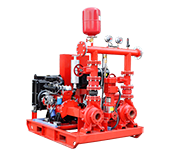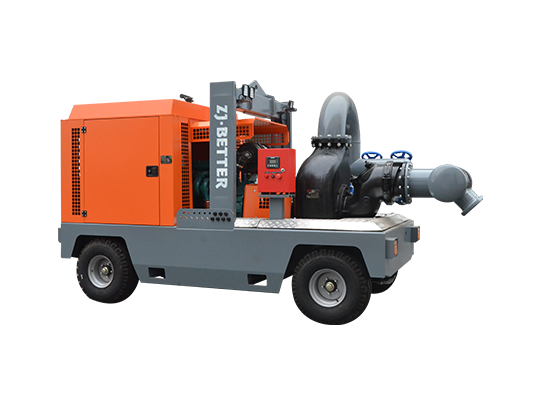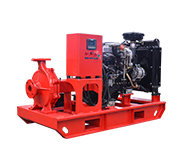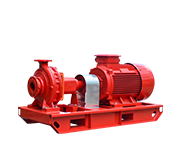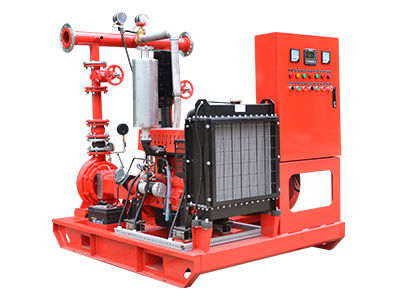- Fire Pump System
-
- UL-Listed Fire Pump SetEDJ End Suction Fire Pump SetEDJ Fire Pump SetEJ Small Flow Fire Pump SetFire Pump PackagesContainerized fire pump setDiesel Fire Pump SetED Small fire pump setElectric Jockey Fire Pump SetFire Pump Set with Jockey PumpFire Pump SystemSplit Case Fire Pump SetMutistage EDJ Fire Pump SetDiesel Fire Pump Set with Jockey PumpFire Fighting Pump SystemElectric Diesel Jockey Fire Pump SetFire Fighting Pump Set with Jockey PumpSmall Capacity Electric Fire Pump SetDJ Fire Pump Set with Jockey PumpEJ Fire Pump SetED Fire Pump Set (Electric+Diesel pump)Diesel Engine Fire Pump SetDiesel Fire Jockey PumpSmall Fire Pump SetEDJ Fire Pump SystemFire Water Pump SetFire Pump AssemblyDJ Small Flow Fire Pump SetCummins Engine Fire Pump Set
- Mobile Pump Unit
-
- Split Case Series Mobile Pump TruckSelf Priming Series Mobile Pump TruckCentrifugal diesel driven dewatering pumps open frame trailerFlow-mixing Mobile Pump TruckFlow-mixing Mobile Pump TruckManure Pump TruckP12 modle mobile Pump truckP10 Modle Mobile Pump Truck1000m³Self Priming Series Mobile Pump TruckLarge Flow Non-Clogging Mobile Fire Pump TrailerTrailer Mounted Fire PumpFire Emergency Mobile Pump TruckDiesel Engine Emergency Mobile Trailer Pump
- Diesel Fire Pump
-
- UL Listed Diesel End Suction Fire PumpXBC-S Diesel Split Case Fire PumpXBC-IS Diesel End Suction Fire PumpXBC-D Diesel Multistage Fire PumpVertical Turbine Diesel Engine Fire PumpDiesel Engine Single-Stage Centrifugal PumpXBC-IS Diesel End Suction Fire Fighting PumpXBC-S Diesel Engine Split Case Fire PumpDiesel Engine End Suction Fire PumpXBC-IS Diesel End Suction Fire PumpsZWC Diesel Engine Self Priming Pump for IrrigationDiesel Engine End Suction Fire Fighting PumpXBC-S Heat Exchange Diesel End Suction Fire PumpXBC-XA Diesel Engine End Suction Fire PumpXBC-IS Diesel Engine Fire PumpDiesel Engine End Suction Fire PumpXBC-IS Diesel Engine End Suction Fire PumpXBC-ISO Diesel Fire Fighting PumpPortable Fire PumpFire Booster Pump

Email: zjbetter@119pump.com
Tel:+86 15336708022(Gloria) +86 13306708055 (Ivy) +86 13357006058 (Serena) +86 13357022877 (Wendy) +86 17757009882(Kate)
Fax:0086-570-3010238
-
Can firefighting pumps be used in conjunction with water tanks or other water sources?
Yes, firefighting pumps are often used in conjunction with water tanks, lakes, rivers, or other water sources to ensure a constant and adequate water supply during firefighting operations. Portable water tanks or drafting equipment can be employed to access water from non-traditional sources when necessary.
View more +
-
What are some common accessories used with firefighting pumps?
Common accessories include hoses of various lengths and diameters, hose couplings and fittings for connecting hoses, suction strainers for filtering debris from water sources, foam injection systems for enhanced firefighting capabilities, and nozzle extensions for reaching inaccessible areas. These accessories enhance the versatility and functionality of firefighting pumps in different scenarios.
View more +
-
Where are firefighting pumps used?
Firefighting pumps are used in a wide range of settings, including residential, commercial, industrial, and wildland firefighting situations. They are also used in fire trucks, aircraft firefighting systems, and marine firefighting applications.
View more +
-
Where are firefighting pumps used?
Firefighting pumps are used in a wide range of settings, including residential, commercial, industrial, and wildland firefighting situations. They are also used in fire trucks, aircraft firefighting systems, and marine firefighting applications.
View more +
-
Where are firefighting pumps used?
Firefighting pumps are used in a wide range of settings, including residential, commercial, industrial, and wildland firefighting situations. They are also used in fire trucks, aircraft firefighting systems, and marine firefighting applications.
View more +
-
Where are firefighting pumps used?
Firefighting pumps are used in a wide range of settings, including residential, commercial, industrial, and wildland firefighting situations. They are also used in fire trucks, aircraft firefighting systems, and marine firefighting applications.
View more +
-
Where are firefighting pumps used?
Firefighting pumps are used in a wide range of settings, including residential, commercial, industrial, and wildland firefighting situations. They are also used in fire trucks, aircraft firefighting systems, and marine firefighting applications.
View more +
-
How does a firefighting pump work?
Firefighting pumps work by drawing water from a source and pressurizing it to create a high-pressure stream. This pressurized water is then used to extinguish fires.
View more +
-
How are fire pumps protected against water hammer, and what measures are taken to prevent this phenomenon?
Water hammer can be prevented by incorporating features such as check valves, surge suppressors, and proper pipe sizing in fire pump systems. These measures help mitigate sudden changes in water flow.
View more +
-
What role does water quality testing play in ensuring the effectiveness of fire pump systems?
Regular water quality testing is important to ensure that the water supplied by fire pumps meets quality standards. Impurities or contaminants can affect pump performance and the effectiveness of firefighting.
View more +
-
Are there standards for the design and installation of fire pumps in high-rise buildings?
High-rise buildings often have specific requirements for fire protection. NFPA 20 and local building codes provide standards for the design and installation of fire pumps in high-rise structures.
View more +
-
What is the role of water storage tanks in conjunction with fire pumps, and how are they sized?
Water storage tanks work in tandem with fire pumps, providing additional water supply. Tank sizing depends on factors like required duration of firefighting, local regulations, and the flow rates of the fire pump system.
View more +
-
How are fire pumps protected against vandalism or tampering, especially in outdoor installations?
Fire pumps installed in outdoor locations may be vulnerable to vandalism. Protective measures, such as fencing, surveillance, and secure enclosures, are implemented to prevent tampering and ensure the pump's readiness.
View more +
-
What role do pressure-reducing valves play in fire pump systems, and when are they necessary?
Pressure-reducing valves regulate water pressure downstream from the fire pump to meet system requirements. They are necessary in situations where the pump generates higher pressure than needed for specific areas or equipment.
View more +
-
What is the significance of a fire pump room and how should it be designed for safety?
A fire pump room houses critical fire pump equipment. It should be designed with proper ventilation, adequate space for maintenance, and compliance with safety regulations to ensure the safety of personnel.
View more +
-
How are fire pumps tested for reliability and performance during their lifespan?
Regular testing during routine maintenance and periodic full-load tests are conducted to assess the reliability and performance of fire pumps throughout their lifespan. These tests ensure the pump meets required standards.
View more +
-
Are there specific requirements for fire pump installations in areas with corrosive atmospheres, such as near coastal regions?
Yes, fire pump installations in corrosive atmospheres, such as coastal regions with salt-laden air, may require special materials and coatings to resist corrosion and ensure the longevity of the equipment.
View more +
-
What role does water hammer play in fire pump systems, and how is it prevented?
Water hammer, caused by sudden changes in water flow, can damage fire pump components. Design features such as check valves, surge suppressors, and properly sized pipes are implemented to prevent water hammer.
View more +
-
How is the performance of fire pumps affected by changes in water temperature?
Fire pump performance can be influenced by variations in water temperature. Systems must be designed to account for temperature changes to maintain consistent water pressure and flow rates.
View more +
-
What measures can be taken to enhance the energy efficiency of fire pump systems?
Energy efficiency measures for fire pump systems may include selecting high-efficiency motors, optimizing pump configurations, and incorporating variable frequency drives (VFDs) to match pump speed with demand.
View more +
-
Are there guidelines for selecting the appropriate fire pump impeller type?
The selection of a fire pump impeller type depends on factors such as required flow rates, system pressure, and the characteristics of the water supply. Impeller selection is a critical aspect of pump design.
View more +
-
Can fire pumps be part of a fire water supply system for industrial processes?
Yes, fire pumps can be integrated into industrial fire water supply systems to provide water for firefighting in the event of an industrial fire emergency. These systems are designed to meet the specific needs of industrial facilities.
View more +
-
How are fire pumps tested for reliability during commissioning?
During commissioning, fire pumps undergo a series of tests to assess their reliability. These tests may include suction pressure tests, flow tests, and performance tests to verify that the pump meets the specified requirements.
View more +
-
Are there specific guidelines for the testing and maintenance of diesel engines used in fire pumps?
Yes, manufacturers provide guidelines for the testing and maintenance of diesel engines in fire pump systems. Regular testing, fuel quality monitoring, and preventive maintenance are essential for diesel engine reliability.
View more +
-
Can fire pumps be used in temporary or mobile settings, such as construction sites or events?
Yes, portable fire pumps can be used in temporary settings like construction sites or events. They are designed to provide firefighting capabilities in locations where a permanent fire pump installation may not be practical.
View more +

